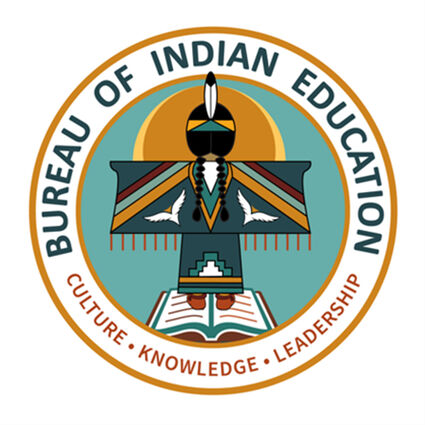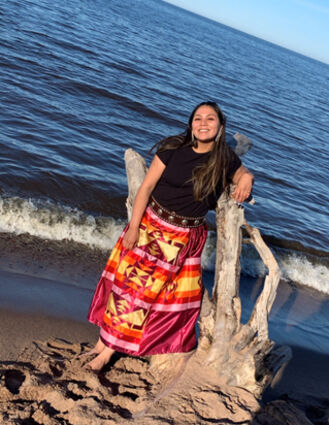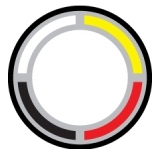
- Details
- By Native News Online Staff
The Bureau of Indian Education (BIE) unveiled an official logo on Friday that was designed by Kayla Jackson, a tribal citizen of the Pyramid Lake Paiute Tribe and a graduate of the BIE’s Haskell Indian University, located in Lawrence, Kan.
"The Bureau of Indian Education is working to lay the foundation for the next generation of Native children to succeed," Assistant Secretary of the Interior – Indian Affairs Bryan Newland said. "I'm proud the BIE will have an official logo as it carries out its mission moving forward, and I'm even more proud that it was designed by a BIE student - Kayla Jackson."
Want more Native News? Get the free daily newsletter today.
Jackson’s design was chosen through a competitive process initiated by the BIE to have a logo designed for the first in its history.
"Over the past few years, the Bureau of Indian Education has instituted new strategies to more independently serve the unique needs of our students," said BIE Director Tony L. Dearman. "As we build our capacity, we are creating our own identity as a world-class education provider. This logo perfectly captures the spirit of our mission. Every detail honors our Indigenous heritage and our commitment to the education of our students. It encapsulates intellect and determination, which is exactly what we strive to instill in every student."
The logo’s center depicts an Indigenous student placed on an open book that symbolizes the power of knowledge and lifelong learning. The four lines on the book represent the four directions, the four seasons, the four stages of life and four sacred plants. The logo represents the ongoing commitment of the BIE to its mission as it provides educational services to its students and tribal communities.

"This design captures culture, knowledge, and leadership," Jackson said. "The open book represents lifelong learning. The Indigenous student is wearing a fancy shawl regalia including moccasins, ribbon skirt, shawl, yoke, beaded headband, and eagle feather with hair long and braids. The student embodies the spirit of their ancestors by dancing with honor and carrying out prayers with every step. The eagles that are emblazoned on the shawl represent acknowledgement, strength, and determination. Finally, in the background there is the sun which gives us growth, abundance and hope."
The logo will be used on all official correspondence as well as publications, website, social media, and communication materials.
The bureau was established on August 29, 2006. Previously, all Bureau of Indian Education programs had been within the Office of Indian Education Programs at the Bureau of Indian Affairs. Both Bureau of Indian Education and Bureau of Indian Affairs are under the Assistant Secretary for Indian Affairs at the U.S. Department of the Interior.
More Stories Like This
Native Students Can Win $5,000 Scholarship, International Distribution in Pendleton Design ContestAmerican Indian College Fund Raises Alarm Over Plan to Shift Native Programs Away From the Dept. of Education
MacKenzie Scott Foundation Gives $5 Million Contribution to Little Priest Tribal College
Tribal Leaders Push Back on Dismantling of U.S. Department of Education
American Indian College Fund Names 12 Student Ambassadors for 2025–26
Help us defend tribal sovereignty.
At Native News Online, our mission is rooted in telling the stories that strengthen sovereignty and uplift Indigenous voices — not just at year’s end, but every single day.
Because of your generosity last year, we were able to keep our reporters on the ground in tribal communities, at national gatherings and in the halls of Congress — covering the issues that matter most to Indian Country: sovereignty, culture, education, health and economic opportunity.
That support sustained us through a tough year in 2025. Now, as we look to the year ahead, we need your help right now to ensure warrior journalism remains strong — reporting that defends tribal sovereignty, amplifies Native truth, and holds power accountable.
 The stakes couldn't be higher. Your support keeps Native voices heard, Native stories told and Native sovereignty defended.
The stakes couldn't be higher. Your support keeps Native voices heard, Native stories told and Native sovereignty defended.
Stand with Warrior Journalism today.
Levi Rickert (Potawatomi), Editor & Publisher

